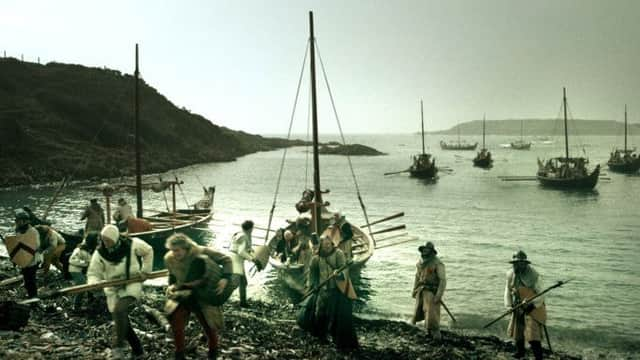BBC to recreate failed Scots invasion of Ireland


After Bannockburn captures a moment “lost in the shadows” of Bruce’s 1314 victory over Edward II of England.
The two-part series tells how Bruce feared a renewed attack. To counter this, he sent his brother, Edward, to Ireland in 1315 to open a second front, intent on draining Anglo-Irish forces of resources and men, while also helping rid Ireland of what he believed were unwanted occupiers.
Advertisement
Hide AdIn return, Bruce’s brother would be made High King of Ireland, a role unfilled since the end of the 13th century.
The docu-drama, narrated by Brian Cox, will feature a re-creation of Edward landing at Larne with more than 6,000 men on 26 May, 1315, to embark on a three-year campaign using Ulster as a launch-pad for Scottish attacks.
Despite scoring many victories, the Scottish forces, hated for pillaging the land and beleaguered by famine, were defeated at the Battle of Faughart on 14 October, 1318. Edward was slain, forcing Bruce to consolidate at home and end any serious involvement in Ireland for a decade.
Scottish medieval re-enactment group Clanranald will feature as will actor Clive Russell, from Game Of Thrones, as Bruce, and Valhalla Rising star Douglas Russell as his brother.
Writer David Ryan said: “Many Scots don’t realise there was a series of events after Bannockburn tied in with Bruce’s attempts to secure his claim on the Scottish throne and to expel English forces from Scotland, and make sure the English monarchs recognised his right to rule, and Ireland is a key part to that.”
Ryan said that local politics and internal feuds meant the native Irish aristocracy failed to rally to Bruce, because of the “misery and war” his forces brought to their lands.
Advertisement
Hide AdThough much of the action was shot in Ireland, Scottish locations have also been used, including the Mull of Kintyre, Bannockburn, Stirling, Turnberry, and Dunfermline Abbey, where Robert is buried.
Among the academics featured in the programme is Stirling University historian Professor Michael Penman. He said the Irish campaign was “a front too far”.
Advertisement
Hide Ad“The defeat [at Faughart] is so categorical Bruce must have thought, ‘I cannot throw another 6,000 men at this’. He may have been thinking it would have been a good time to draw a line under it.”
Penman added that the arrival of a cattle plague in Scotland was the deciding factor in Bruce ending his Irish campaign, and resulted in a two-year truce with Edward II.
He said the campaign was “a cul-de-sac” for Bruce’s ambitions, creating a crisis with the death of his brother, leaving him with only his grandson as heir and facing a major plot against him at home. Penman said because the Irish campaign took place so close to Bannockburn, it has been “lost in its shadow”. He added: “It doesn’t fit with the image of a patriot king defying English imperialism if he, in turn, invades another country.”
The programme – a co-production between Ireland’s Tile Productions and Glasgow-based Caledonia TV – will be broadcast on BBC Scotland in spring.